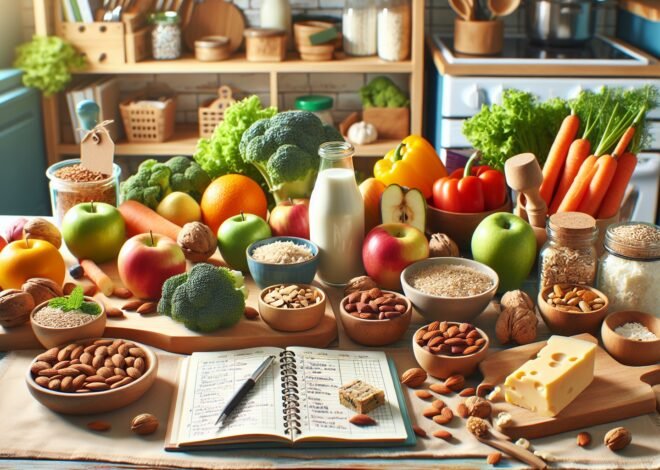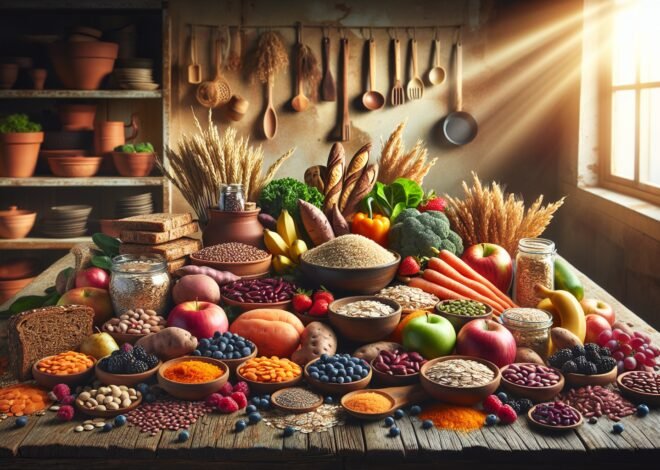
How to Transition to a Dairy-Free Diet: Step-by-Step Guide
Transitioning to a dairy-free diet can significantly improve health and align with ethical choices. Did you know that 68% of the global population suffers from some form of lactose intolerance? This step-by-step guide will walk you through the essentials of adopting a dairy-free lifestyle, including identifying dairy-containing foods, finding tasty alternatives, and maintaining balanced nutrition. Readers will also discover potential challenges and learn tips for overcoming them. Whether you’re motivated by health concerns, ethical reasons, or the desire to try something new, this guide provides a solid foundation for making the transition smoothly and effectively.
Understanding the Benefits of a Dairy-Free Diet
Switching to a dairy-free diet can bring a range of benefits to your health and well-being. Understanding these advantages can motivate you to make informed dietary choices. From improved digestion to weight management, there’s a lot to explore about the positive impacts of eliminating dairy from your meals.
How a Dairy-Free Diet Can Improve Digestion
Many people experience digestive issues due to lactose intolerance or dairy allergies. A dairy-free diet can alleviate symptoms such as bloating, gas, and diarrhea. Removing dairy products helps the body digest food more efficiently, reducing discomfort and improving overall gut health. This adjustment can be especially beneficial for those with sensitive digestive systems.
The Impact of Going Dairy-Free on Skin Health
Our skin often reflects our internal health, and dairy can play a significant role in skin conditions. Many individuals report clearer skin after cutting out dairy, as it can trigger acne and other inflammatory skin issues. The hormones present in milk might exacerbate skin problems, so eliminating them can lead to a more radiant complexion.
Dairy-Free Diet and Its Role in Weight Management
For those looking to manage their weight, a dairy-free diet can be advantageous. Dairy products are often high in calories and fat, and by removing them, individuals might find it easier to maintain a healthy weight. Additionally, the focus on whole, plant-based foods can lead to better nutrition and satiety, helping to avoid overeating.
Preparing for Your Transition to a Dairy-Free Lifestyle
Embracing a dairy-free lifestyle requires preparation and knowledge about alternative food options. Identifying hidden dairy sources and understanding food labels are essential skills. This section guides you through making a smooth transition without feeling overwhelmed.
Identifying Dairy Ingredients and Hidden Dairy Sources
Many products contain hidden dairy ingredients, making it crucial to identify them. Ingredients like casein, whey, and lactose indicate the presence of dairy. It’s important to check labels for these terms to avoid unintentional consumption of dairy.
Stocking Your Pantry: Essential Dairy-Free Alternatives
Stocking your pantry with dairy-free alternatives ensures you have options for every meal. Consider plant-based milks like almond, soy, and oat milk. Vegan cheeses, yogurts, and butters are also great substitutes to keep on hand.
- Almond milk
- Soy yogurt
- Coconut cream
- Cashew cheese
How to Read Food Labels for Dairy-Free Products
Reading food labels effectively helps in identifying dairy-free products. Look for certifications like “Dairy-Free” or “Vegan” to ensure the absence of dairy. Familiarize yourself with terms that indicate dairy presence, ensuring your choices align with your dietary goals.
Implementing Dairy-Free Meal Plans and Recipes
Creating delicious and satisfying meals without dairy can be simple and enjoyable. This section provides meal ideas and recipes to help you maintain a balanced diet. Explore breakfast, lunch, dinner, and snacks that are both tasty and dairy-free.
Delicious Dairy-Free Breakfast Options to Start Your Day
Start your day with tasty dairy-free breakfast options. A smoothie made with almond milk, spinach, and banana offers a nutritious start. For something heartier, try oatmeal topped with fresh fruits and nuts. These meals provide energy and essential nutrients without relying on dairy.
Lunch and Dinner Ideas for a Tasty Dairy-Free Diet
For lunch, consider a quinoa salad with mixed greens, chickpeas, and avocado. Dinner might include a vegetable stir-fry with tofu and brown rice. These meals are filling, nutritious, and free from dairy, supporting a healthy lifestyle.
Satisfying Dairy-Free Snack and Dessert Recipes
Dairy-free snacks and desserts can still satisfy cravings. Indulge in a fruit salad with a sprinkle of coconut flakes or enjoy dark chocolate for a sweet treat. Consider making homemade energy bars with nuts and dried fruits for a nutritious snack.
Conclusion
Switching to a dairy-free diet often begins with identifying and substituting non-dairy alternatives like almond, soy, or oat milk. People may make this transition due to lactose intolerance, milk allergies, or ethical and environmental concerns. It’s essential to focus on getting enough calcium and vitamin D from other food sources or supplements. Initially, individuals might experience digestive changes as their body adjusts to new foods. Reading labels and experimenting with different recipes can help make the process smoother and enjoyable.
FAQ
What are common substitutes for dairy products in a dairy-free diet?
Common dairy substitutes include almond milk, coconut milk, soy milk, and oat milk. Cheese alternatives like cashew cheese and nutritional yeast offer flavor without dairy. For yogurt, options like coconut yogurt and almond yogurt are popular. These dairy-free choices cater to various tastes and dietary needs.
How can I ensure I’m getting enough calcium on a dairy-free diet?
To maintain adequate calcium levels, consume fortified plant-based milks and juices. Leafy greens such as kale and broccoli provide natural sources of calcium. Incorporate almonds, tofu, and sesame seeds into meals for added calcium benefits.
What are the health benefits of switching to a dairy-free diet?
Going dairy-free may improve digestion and reduce bloating for those lactose intolerant. It can also lead to clearer skin and decreased inflammation. Some individuals experience a boost in energy and better weight management.
Are there any risks or side effects of going dairy-free?
Eliminating dairy can lead to calcium or vitamin D deficiencies if not properly managed. It’s vital to seek alternative nutrient sources to maintain balanced nutrition. Consulting with a healthcare professional can help tailor a diet to personal needs.
How do I transition to a dairy-free lifestyle while maintaining a balanced diet?
Start by gradually replacing dairy items with alternatives. Experiment with recipes and products to find preferred flavors. Ensure balanced meals by including proteins, healthy fats, and carbohydrates. Keep nutritional variety to cover all essential nutrients.
What are the best dairy-free food brands available on the market?
Brands like Silk, Almond Breeze, and Oatly are well-regarded for their quality plant-based milks. Daiya and Follow Your Heart offer popular cheese alternatives. Kite Hill provides tasty dairy-free yogurts, appealing to those seeking flavorful options.











